Introduction – Best Cat Litter For Environment
Interested in the best eco-friendly cat litter? Cat litter is a necessary product for cat owners. One question that surfaces is the degree of environmental impact. But rather than blindly plunge into new products, and get confused by marketing and packaging, let’s consider carefully what are the different types of cat litter, the environmental impact, and alternatives. ShrinkThatFootPrint always wants to approach things in a sensible way. And once you’ve picked out your product, you will still have to find a sustainable way to dispose of it.
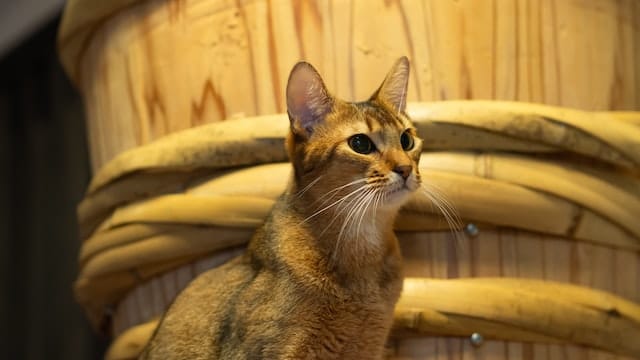
Cat Litter Carbon Emissions: 1 kg CO2 Emitted Per Pound From Our Analysis
Your cat litter is contributing up to 2% of your total carbon emissions. Let’s see why.
Clay-based cat litter is the most popular material that cat owners use. It is made from clay that is mined from the earth and then processed. The most commonly cited problems are the three following: strip mining that damages valuable top soil and natural habitats, manufacturing emissions, and non-biodegradability of end product. Let’s carefully go through each of these.
We haven’t seen any estimates for the carbon impact of cat litter. But let’s take a rational approach to estimating it. Wyoming is the place where 70% of cat litter mining takes place, also a state that is very partial to fossil fuel use. The cost of cat litter is about $0.40 per pound, translating to $8 for a 20 lb bag. Let’s take an extreme position: the entire cost of producing the cat litter is due to fossil fuel energy use for power the mining machinery and the material processing post-mining.
Let’s also assume the most extreme polluting fossil fuel, gasoline, is used. Then we just need to figure out what is the carbon footprint of $0.40 of petroleum. As of 2023, $0.40 will buy you 10% of a gallon of gasoline. We also know from EPA estimates that a gallon of gasoline generates 8.8 kg of CO2. Therefore, $0.40 translates to 0.88 kg of CO2. That is, producing a pound of cat litter requires 0.88 kg of CO2. Note we have ignored the manufacturing cost of the gasoline which will add about another 10%.
If we add in the manufacturing cost of gasoline, an upper bound on the carbon cost estimate to manufacture a pound of cat litter is 1.0 kg of CO2 emissions.
The average household cat uses 160 lbs (72 kg) of cat litter a year. That translates to 72 kg of CO2 emissions per year. Is that a lot? Well, it’s not nothing, however, its miniscule compared to what a person uses for heating, transportation and food. The contribution of those three biggest components for a person living in the US is about 16 tons of CO2. For the rest of the world, the average emission is 4 tons of CO2.
Therefore, annual cat litter use comprises about 0.5% of a person’s carbon emissions. At 58 million cats in the US, that’s 4.2 million tons of CO2 per year. Which is equivalent to about 280,000 people’s worth of CO2.
Remaining Costs Are Habitat Destruction
Because clay itself contains no carbon, whether or not it biodegrades is immaterial to the problem of greenhouse gas emissions. We should only worry about biodegradability as to whether the carbon forms a closed cycle. In fact, non-biodegradable plastics are valued for their ability to sequester carbon for a long time, slowly down the release of decomposing carbon into the atmosphere.
If biodegradability is not a concern, that leaves us with top soil and habitat destruction from strip mining. These are the remaining costs of cat litter. For this reason, depending on your values, you might consider wanting to try an alternative to find the best eco-friendly cat litter.
Review Of Sustainable Kitty Litter
We collected 5 alternatives to traditional clay-based cat litter to serve as examples of what you mind look for the best eco-friendly cat litter. Remember that the clay-based cat litter’s main problem is habitat destruction and emissions of 1 kg CO2 per pound of cat litter. That will be a good foundation for a comparison to a different product.
1. ökocat Natural Wood Cat Litter
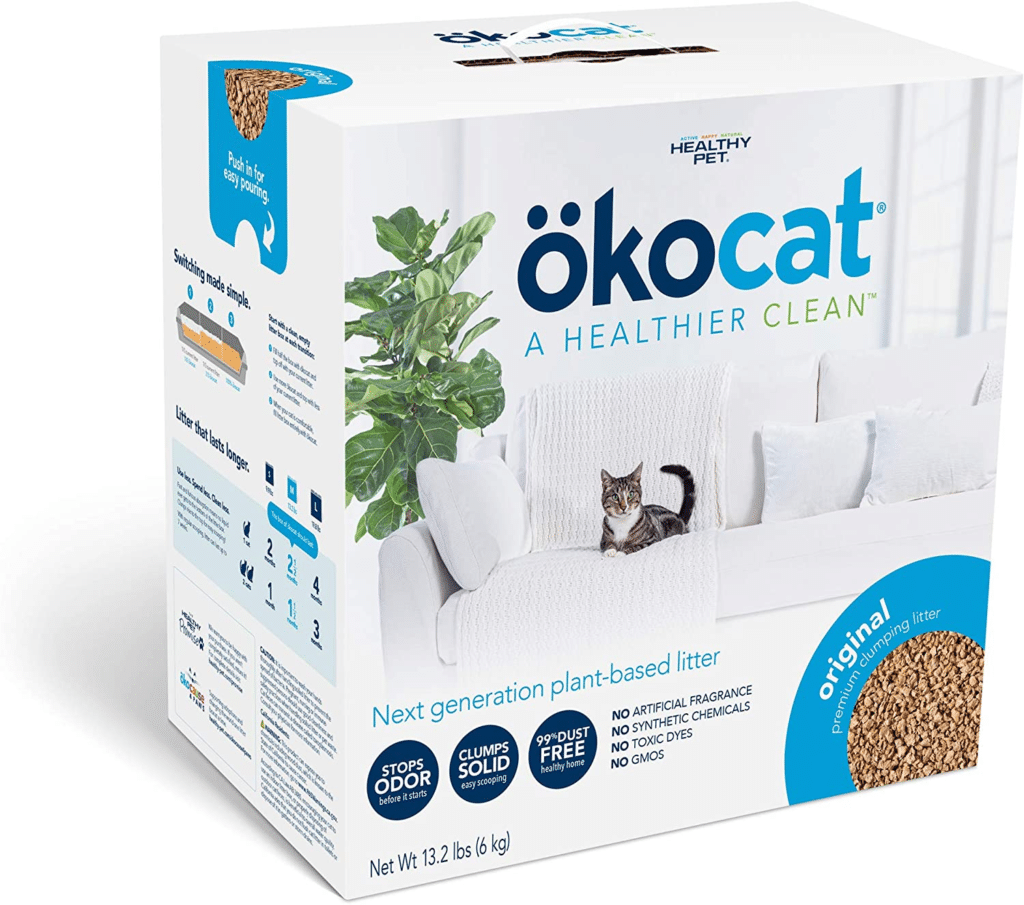
ökocat Natural Wood Cat Litter is a premium, plant-based clumping cat litter that offers superior odor control and is exceptionally absorbent. It is made from precision-cut wood fiber that absorbs liquid on contact and forms solid, easy-to-scoop clumps.
This litter is 99% dust-free for a healthier home, and it is also free of artificial fragrances, synthetic chemicals, toxic dyes, and GMOs. It is biodegradable and compostable, so it degrades quickly and cleanly.
The type of wood will affect the carbon footprint. If its fast growing or farmed or managed, then the impact is less. If its a slow growing wood or virgin forest, then the loss of a carbon fixing tree and the addition of carbon into the air is a major contributor to emissions.
2. Arm & Hammer Ultra Last Unscented Clumping Cat Litter
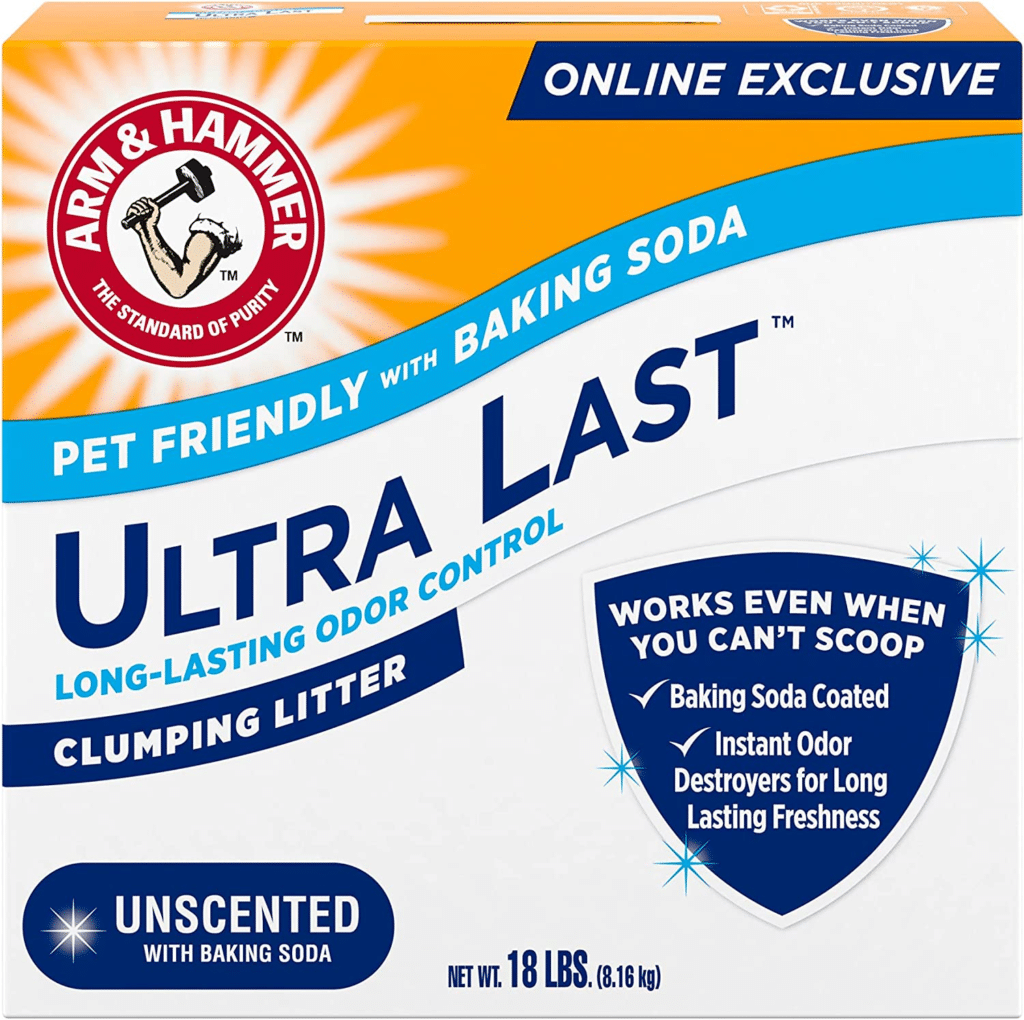
ARM & HAMMER Ultra Last Unscented Clumping Cat Litter is an 18-pound bag of dust-free, pet-friendly litter that provides long-lasting odor control and freshness. Its 99% dust-free formulation forms rock-solid clumps to help remove the source of odors easily.
The granules are coated with ARM & HAMMER Baking Soda odor neutralizers for a refreshing unscented experience. It is an odor destroyer that contains Baking Soda to help neutralize odors and keep the litter box smelling fresh.
The product doesn’t contain clay, but does contain plants. The type of plants will affect the carbon footprint. If its fast growing, then the impact is less. If its a slow growing plant, then the rate of carbon emission will outweigh the carbon fixing and again the cat litter will be a net emitter.
3. Alpha Paw – Genius Cat Litter
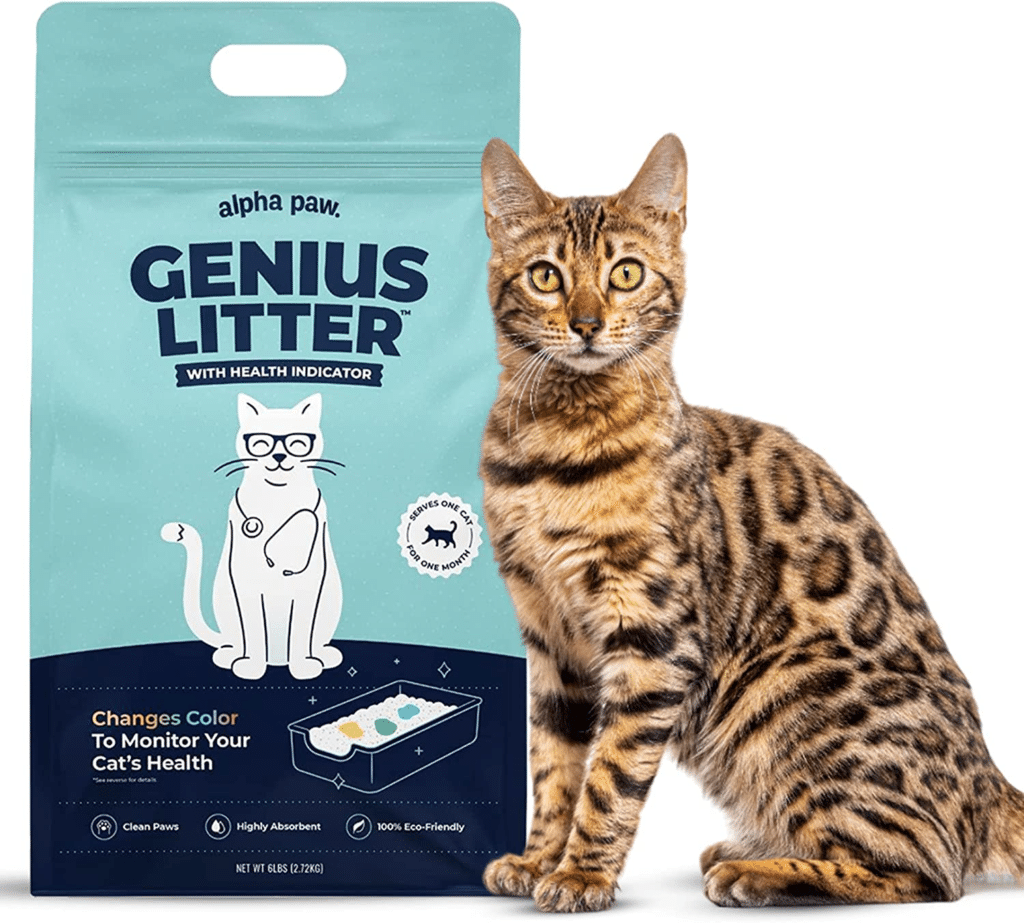
Alpha Paw’s Genius Cat Litter is supposed to monitor your cat’s health. It contains an indicator that can detect deviating values in urine, such as blood, alkaline, bilirubin, or abnormal PH levels.
It is reported to be super absorbent, low-tracking, and provides excellent odor control. It is all natural, hypoallergenic, and does not contain any chemicals or additives. It also does not stick to your cat’s paws, making it a safe and healthy choice for your feline friend.
The product is the first “crystal” based litter that we’re reviewing. However, we not sure if crystals are more environmentally friendly (or even less friendly) than clay-based cat litter. The reason is that crystals are derived from a silicate based material which potentially means mining of sand which has the same problems as mining of clay.
4. Catalyst Upcycled Soft Wood Cat Litter Cat Formula
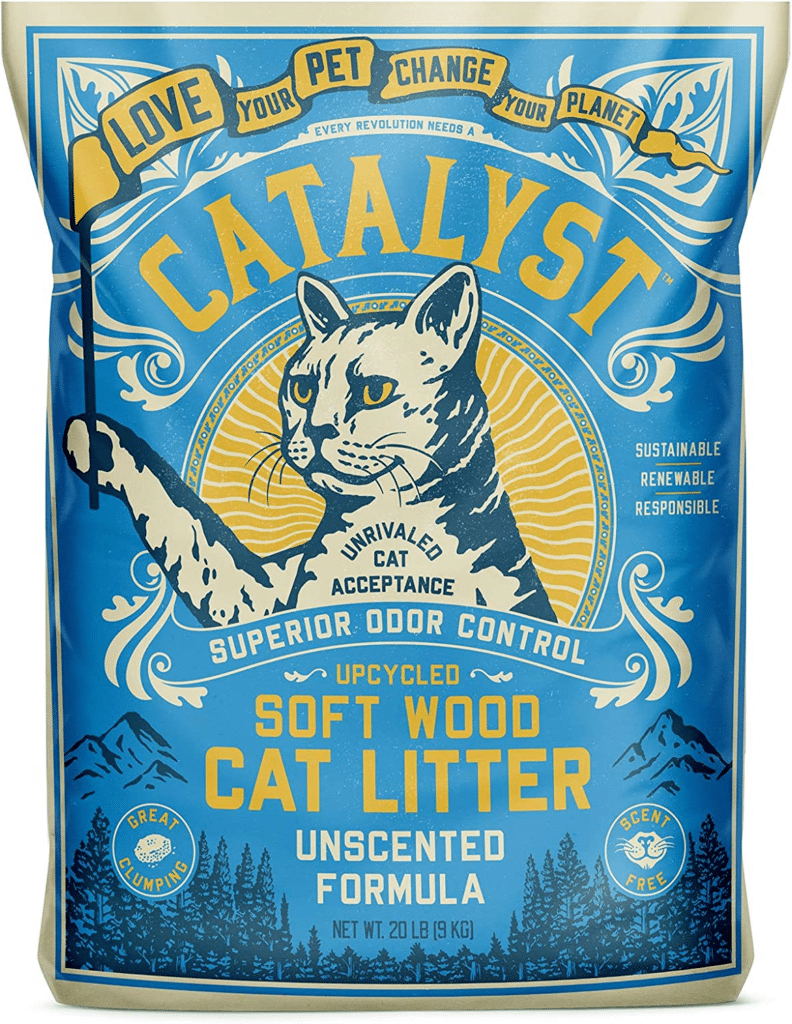
Catalyst Upcycled Soft Wood Cat Litter Cat Formula is a healthy cat litter that is 4 times more absorbent than other leading brands and has an enhanced odor control.
It is made of upcycled soft wood fiber, which traps malodor and leaves air smelling clean without added fragrance. It is easy on paws and noses and is widely accepted by cats.
The cat litter also features high-performance, all-natural clumping agents to create stronger clumps for easy clean-up. Again, as above, the carbon impact will depend on the type of tree this is derived from. We would prefer a wood which is sustainably farmed.
5. PetSafe ScoopFree Premium Crystal Cat Litter
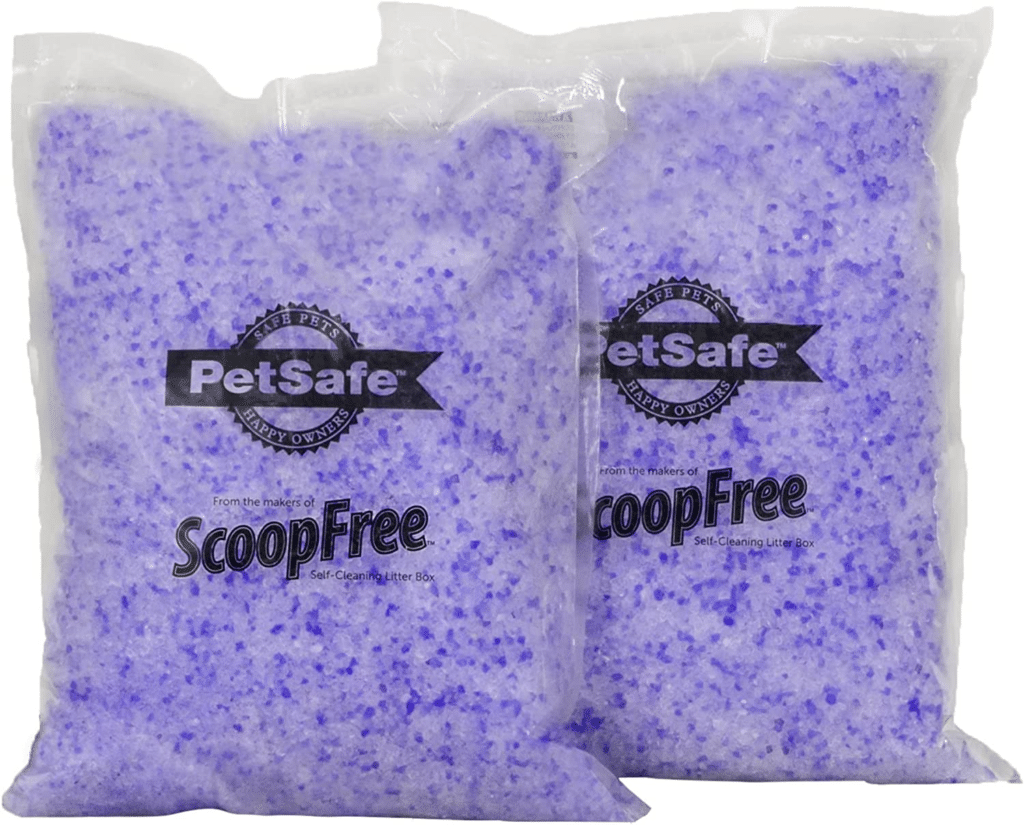
PetSafe ScoopFree Premium Crystal Cat Litter is an award-winning litter that offers deep cleaning and odor control. It features a boosted blend of natural probiotics that target waste, deep cleaning your litter on a microscopic level 24/7. This litter also reduces the spread of unseen waste to kitchen counters, beds, and other areas of the home.
It has all the benefits of Boxiecat’s extra strength litter formula, including rock hard Flat Top clumps, zero odors, 99.9% dust free, low tracking granules, and 2x longer lasting because it stays clean and dry. This product is free of added fragrances. See our note above about crystals.
6. Yesterday’s News Purina Clumping Paper Lightweight Cat Litter
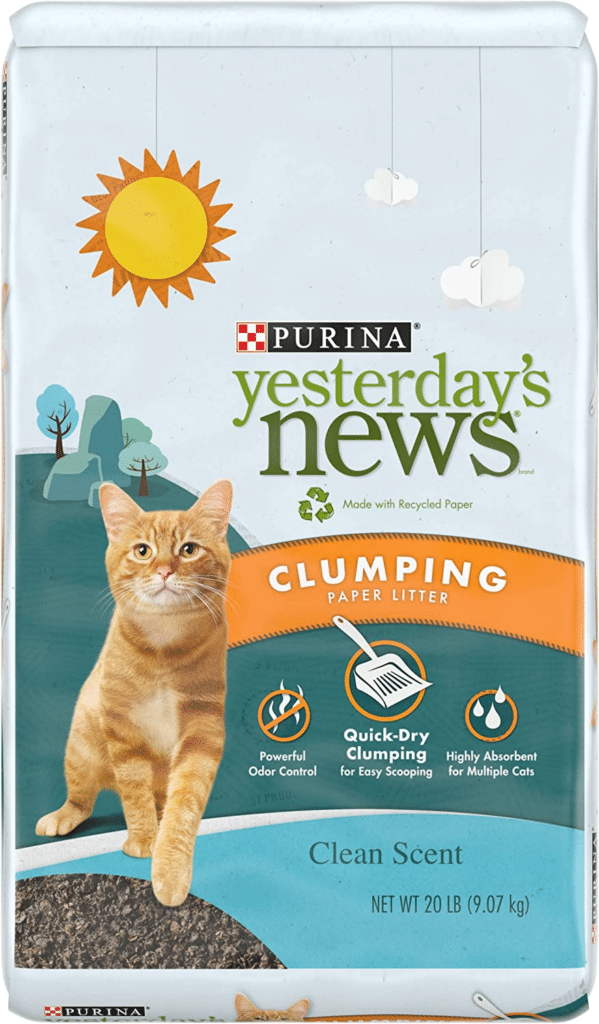
This product is the first in our list to use recycled paper (hence Yesterday’s news). It stands out for its commitment to environmental responsibility and cat safety. Its use of recycled paper as the primary material makes it a sustainable choice for cat owners, while its allergen-free nature can be beneficial for both cats and their human companions.
The quick-dry clumping property of this litter simplifies cleaning by allowing for easy scooping. Its powerful odor control is another advantage, promising a fresh, clean scent, which can be a relief for multi-cat households.
The lightweight feature is a practical advantage, providing the same volume as clay clumping litter at half the weight, reducing the physical effort needed for handling and changing the litter. The fact that it comes in a 100 percent recyclable bag further enhances its eco-friendly credentials.
With its high absorbency, this litter seems suitable for multiple cats, a convenience for larger feline families. The fact that it’s made with recycled paper in Springfield, MO, could be a plus for those seeking products made in the USA.
Cat Litter Alternatives: 3 Types
Based on the above, there are 3 alternatives to traditional cat litter that can reduce the habitat destruction impact of your cat’s litter box.
Paper-based options, such as recycled paper pellets, are becoming more popular.
Plant-based options, such as wheat and corn-based litters, are also an eco-friendly option.
Silica-based cat litter is also popular. It is made from silica crystals that are derived from sand, and is usually more expensive than clay-based litter. The production of silica-based litter can also be damaging to the environment, as the production process creates pollutants.
Biodegradable cat litter is becoming increasingly popular, as it is seen as a more eco-friendly option.
Summary – Sustainable Litter
In summary, cat litter has a modest environmental impact. Clay-based, silica-based, and biodegradable litters all have their own environmental impacts, and it is important to be aware of them. Fortunately, there are alternatives to traditional cat litter that can reduce the environmental impact of your cat’s litter box. Paper-based and plant-based options are becoming increasingly popular and effective alternatives.
